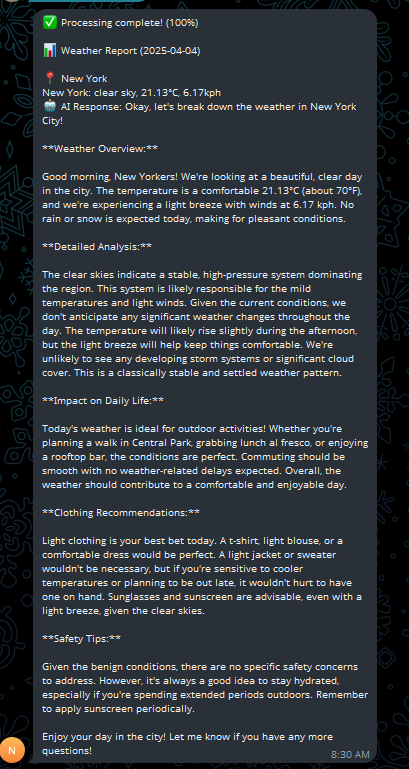Five big questions the GOP's budget plan for Trump leaves unanswered
Senate Republicans are pushing to adopt a budget blueprint this week to kick off a complex process to advance President Trump’s tax agenda. The framework follows weeks of bicameral negotiations between GOP leaders after Republicans in both chambers introduced drastically different budget plans earlier this year. However, the new plan includes several differing instructions for...

Senate Republicans are pushing to adopt a budget blueprint this week to kick off a complex process to advance President Trump’s tax agenda.
The framework follows weeks of bicameral negotiations between GOP leaders after Republicans in both chambers introduced drastically different budget plans earlier this year.
However, the new plan includes several differing instructions for the two chambers as they craft a final bill, pushing off tackling some key issues for later when it comes time to decide what makes the cut in Trump’s long-awaited “big, beautiful bill.”
Here are several big questions the new blueprint leaves unanswered.
Which of Trump’s tax cut proposals will make it in?
Senate Republicans say the new budget plan will pave the way for the party to make permanent Trump’s signature 2017 tax cuts that are set to expire later this year – but there’s still uncertainty about which other proposals could wind up making it in the eventual package.
Senate Budget Committee Chair Lindsey Graham (R-S.C.) said on Wednesday that he determined that “current policy will be the budget baseline regarding taxation,” moving forward with an accounting method that would allow the cost of the 2017 tax cut extensions to be ignored.
However, the resolution also features instructions for the Senate’s tax-writing committee detailing a cap of $1.5 trillion for further changes that would increase the deficit over roughly the next decade.
Some of the tax pitches that have gained steam in recent months include proposals from Trump to do away with taxes on tips and overtime wages. There has also been some support in the party for raising the state and local tax (SALT) deduction cap to provide relief for constituents in states like New York.
Fiscal hawks in the House, meanwhile, are crying foul over the scoring method the Senate is using to make Trump’s tax cuts permanent. They argue that despite being scored at $0 in the bill, they will add to the deficit.
How much will it cut spending?
The plan includes different targets for spending cuts for both chambers, with a gap of more than $1 trillion dollars separating the two sets of instructions.
In the Senate’s set of instructions, committees on Agriculture, Banking and Housing, Energy and Natural Resources, Health and Education are tasked with finding at least $1 billion in savings each – amounting to a minimum of $4 billion. The move is intended to provide them with more flexibility when it comes time to write the expected bill that will result from a wonky budget process Republicans are using known as budget reconciliation.
By contrast, the House’s instructions call on various committees to find at least $1.5 trillion in savings, while leaning on its Agriculture, Education, and Energy and Commerce committees to find ways to reduce the deficit.
It also includes similar language in the House’s previous resolution calling for their proposed cap on tax cuts to be reduced if cost-cutting recommendations from committees don’t total at least $2 trillion.
Senate Republicans insist the $4 billion is a floor for cuts. But the number is outraging conservatives in the House, who are threatening to not even back the blueprint the Senate passed because of it.
What will happen to Medicaid?
The new plan also includes instructions from the House’s earlier budget resolution that has already prompted GOP concerns about potential Medicaid cuts ahead of an expected vote on the plan this weekend.
Those instructions call for the House Committee on Energy and Commerce, which has jurisdiction over Medicaid, to submit recommendations to reduce the nation’s deficits by at least $880 billion.
The Congressional Budget Office said in a report last month that House Republicans would have to make cuts to Medicaid in order to cut $2 trillion in spending over the next decade.
GOP concerns about cuts to the program, which tens of millions of low-income Americans rely upon, could pose a possible hurdle for leadership as they look to move quickly to craft and pass the major legislation this year. However, others say changes to entitlement reforms are necessary to tackle the nation’s spending.
“If you don’t get to entitlement spending and you don’t talk about Medicaid, then you're not talking about the real problem,” House Appropriations Committee Chair Tom Cole (R-Okla.) said this week, before calling on the Senate to follow suit.
“I expect the United States Senate, two thirds of whom will not be on the ballot, to do the same thing,” he said. “It’s not a tough call.”
How high will Republicans raise the debt limit?
Republicans also want to use the special budget process to raise the debt ceiling, which caps how much money the Treasury Department can owe to pay the country’s bills.
But there’s already a key difference between both chambers’ sets of instructions. While the House’s plans call for raising the debt limit by $4 trillion, the Senate’s instructions detail a $5 trillion increase to the debt ceiling.
The debt ceiling was reinstated in January after being suspended for a year and a half under a previous bipartisan deal struck between former President Biden and House GOP leadership. The national debt currently stands at more than $36 trillion.
Absent congressional action, recent projections have indicated the nation risks defaulting on its debt later potentially in the summer or early fall — an outcome that experts have warned would mean catastrophic effects for the economy.
Graham told reporters this week that a $5 trillion increase to the debt limit should stave off the threat of default through the coming midterm elections. Doing so through the budget reconciliation process would help Republicans avoid having to give into demands for concessions from Democrats in exchange for their help to raise the nation’s borrowing limit.
But not all Republicans are happy with the $5 trillion amount, including in the Senate.
“I think $5 trillion is not conservative,” Sen. Rand Paul (R-Ky.) told The Hill on Thursday, adding he’s pushing for an amendment to the plan to instead “reduce the amount of borrowing from $5 trillion to $500 billion.”
“The reasoning is, we’d like to give them three months to borrow money in order to ensure that they’re actually going to fulfill their promises to cut spending,” he said. “If we give them $5 trillion, they don’t care what we think for the next two years because they got all the money they want in the world.”
When will Republicans pass much of Trump’s agenda?
House GOP leadership has been optimistic that Republicans could pass legislation to enact Trump’s tax and spending priorities before summer – but some Republicans have acknowledged the task would be easier said than done.
If the resolution is adopted, the coming weeks will be critical for Republicans to remain unified as they assemble a major tax package and move it through Congress with a razor-thin majority in the House.
And some conservatives are already coming out in opposition against the recent resolution, signaling potential headaches for Speaker Mike Johnson (R-La.) if the plan comes up for a vote in the House.
Rep. Andy Ogles (R-Tenn.) said in a video he shared on X on Thursday that he was “a hard no on this junk,” calling the recent proposal unveiled by the Senate “really offensive” and criticizing his colleagues in the other chamber for not writing in higher spending cut targets.














































































